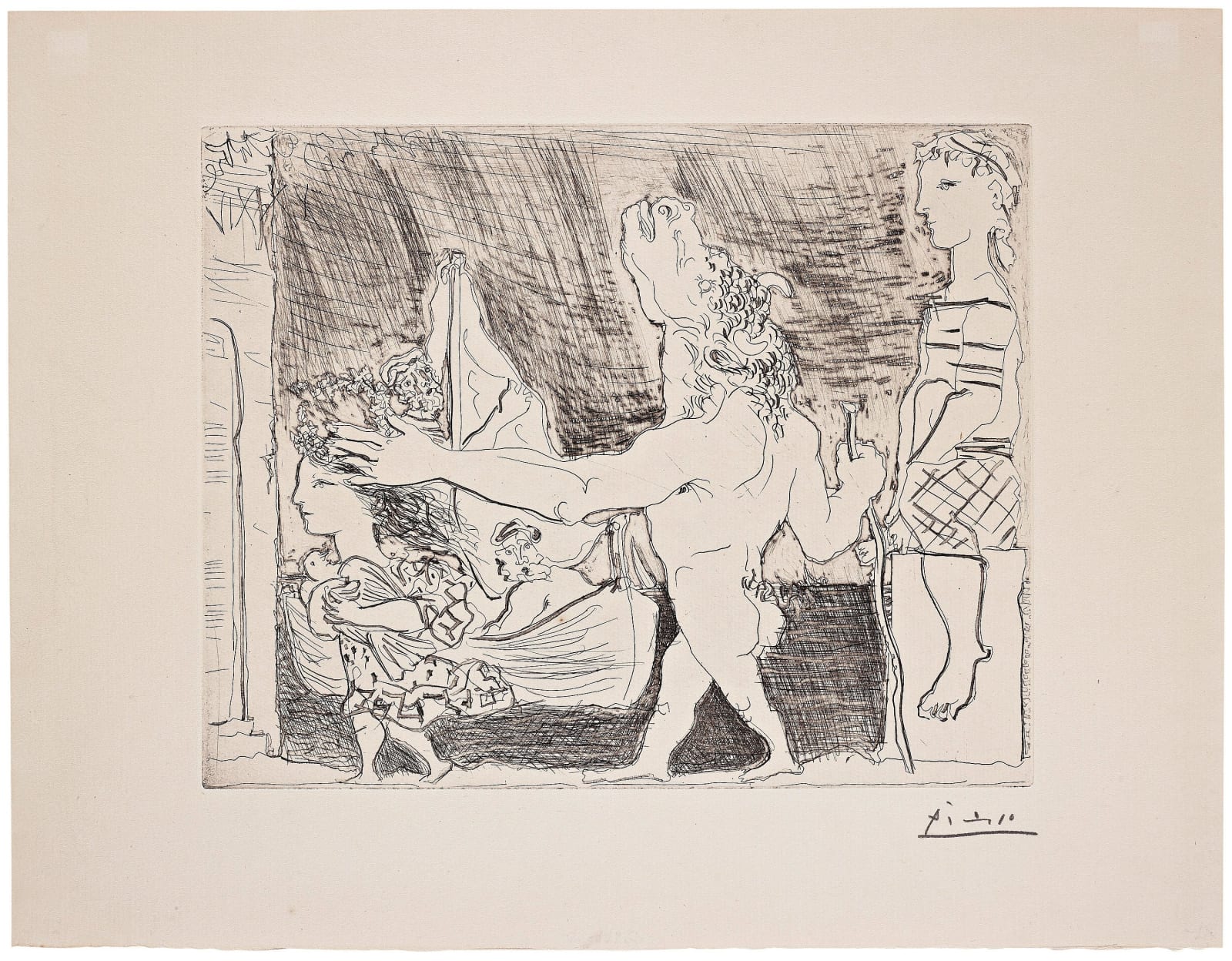Pablo Picasso Spanish, 1881-1973
Papier: 34 x 43.7 cm
Printed by Lacourière, Paris.
Edited by Ambroise Vollard, Paris.
Further images
Provenance
Galerie Pierre, Stockholm.
Private collection, Sweden
Galerie Jean-François Cazeau, Paris
Literature
Georges Bloch, Pablo Picasso, Catalogue de l’oeuvre gravé et lithographié 1904-1967, Berne, Editions Kornfeld et Klipstein, 1968, p. 73, n°223.
Brigitte Baer, Picasso Peintre-Graveur. Tome II, Editions Kornfeld, 1989, p. 311, n°435.





